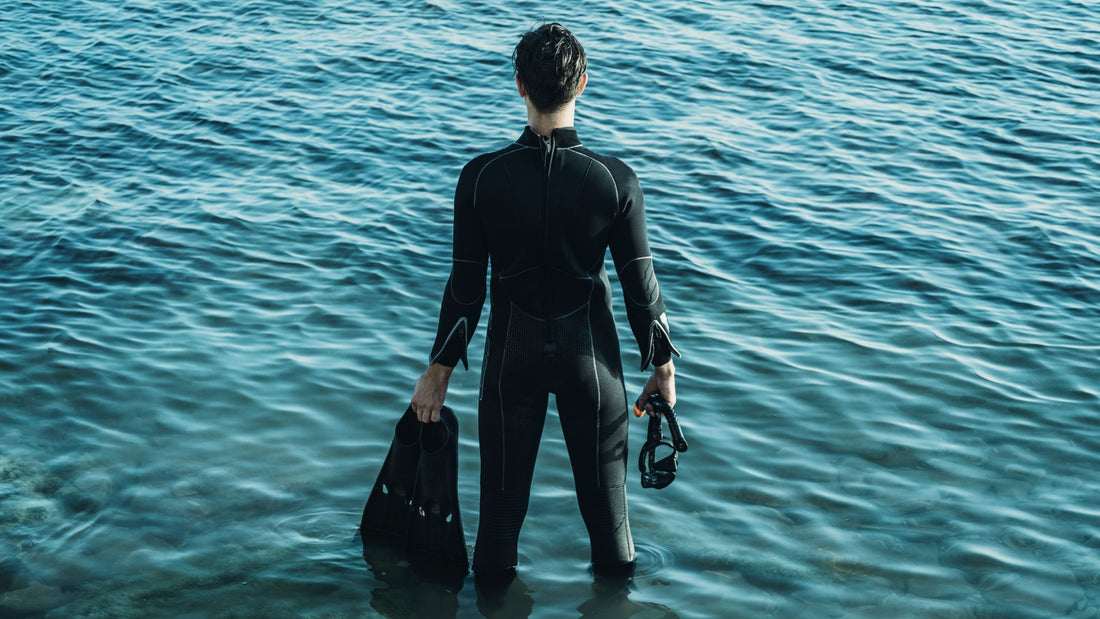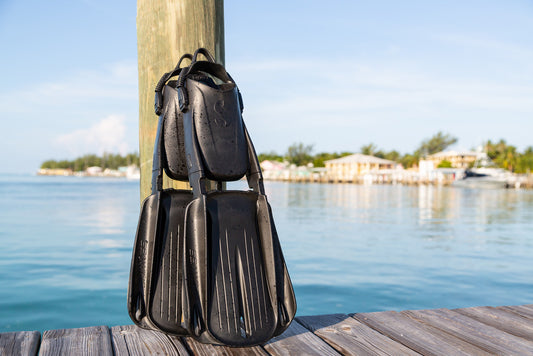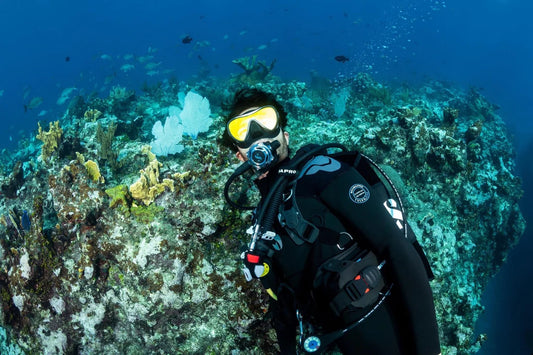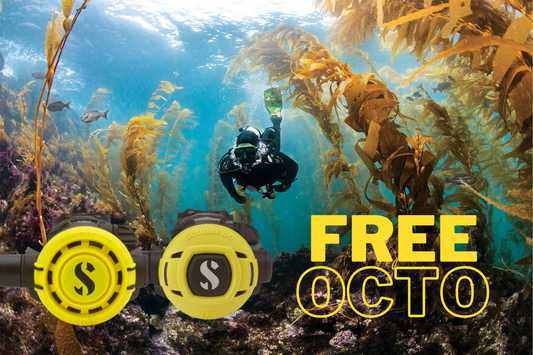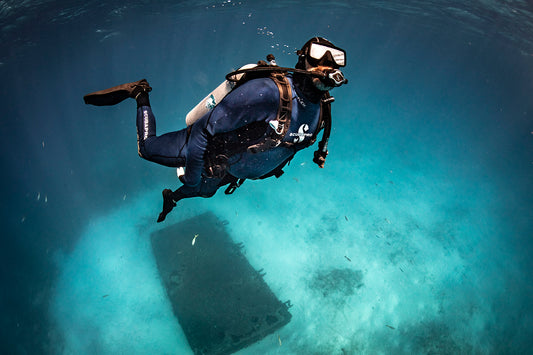Wetsuit Variations Explained: Choosing The Best Wetsuit
Having difficulty selecting a wetsuit to best suit your scuba diving, snorkelling or open water swimming needs? Having many different wetsuit styles out there on the market is a blessing, but it can also be overwhelming to decide on what type of wetsuit will best suit you in terms of comfort, warmth and protection. If you’re struggling to make that decision, read on and within this blog, you’ll discover the different variations, their pros and cons so you can make a conclusion on which type of wetsuit will fit your water sport activity needs.
Most Popular Wetsuit Styles
First off, what is a wetsuit? Wetsuits provide insulation against the cold of the water you are in. It offers extra protection and warmth than if you were in a rash vest or bathing suit. Keeping warm while in the water is essential to ensure a more enjoyable and longer time in the water.
There are four most common wetsuit styles on the market and that’s the 7mm, 5mm, 3mm and shorty wetsuit. All amazing wetsuit styles offer great protection and warmth, but some are better in some conditions while others are not so much.

7mm Wetsuit
Let’s start with the thickest wetsuit of them all, and that’s the 7mm wetsuit. The 7mm wetsuit is perfect for those who dive in colder waters (approximately 10 - 15°c) or for those who get cold easier when diving. Other gear that will offer extra protection with the 7mm wetsuit are hoods, gloves and booties so you can keep other essential parts of your body extra warm and toasty.
Putting on a 7mm wetsuit is a bit more difficult than putting on a 5mm or 3mm wetsuit as it’s much thicker. But if you’re having difficulty putting on your wetsuits, check out our Youtube video on the guide for easy donning and doffing.

5mm Wetsuit
Next up it’s the 5mm wetsuit. It’s a perfect wetsuit that will suit most diving conditions. The 5mm is usually forgotten about as people usually select the 7mm for cold water/winter season and the 3mm for summer/warm tropical waters. But the 5mm is the perfect option for people who get too warm in a 7mm, yet too cold in a 3mm. The 5mm can be used for those in-between seasons when it's not cold, yet not warm.
The 5mm wetsuit is perfect for both diving and cold water freediving/snorkelling adventures. If you’re swimming in water temperatures from 15-20°c, then this might just be the wetsuit for you.
3mm Wetsuit
Now onto the 3mm wetsuit. This wetsuit is perfect for those who like to dive in more tropical waters. Having a 3mm wetsuit, it offers more protection than a rash vest and a short might, while offering optimal comfort and warmth throughout your ocean adventure. 3mm wetsuits are also popular among open water swimmers, freedivers and snorkelers.
If you want to dive in more tropical waters, you may feel inclined to just wear a skinsuit or rash vest, but don’t be fooled. You can still become cold in tropical waters if you’re doing multiple dives a day as your core body can drop, leaving you feeling cold during your later dives.
Shorty Wetsuit
Last but not least is the shorty wetsuit. We put this wetsuit in the same category as the 3mm wetsuit. So you can use the shorty while you’re diving in warm tropical waters.
A lot of divers and snorkelers prefer the short wetsuit as it’s less restricting and easier to get on. If you’re putting a full wetsuit on in extreme heat, it can become exhausting and overwhelming. So if you’re looking for an easier option and you don’t feel the cold as easy, yet need some extra protection, then we’d recommend the shorty wetsuit.
A few downsides to using shorty wetsuits is that it doesn’t offer the full protection that a long wetsuit might. So if you’re snorkelling, you may want to consider wearing reef-safe sunscreen and watch out for things that sting, i.e jellyfish.
Other Factors to Consider When Selecting Your Wetsuit
When selecting the right wetsuit for you, we recommend that you carry out and consider the following so that you know that you’re making the right choice.
- With a style in mind, try on the wetsuit for size. If in doubt, try on a few sizes and see which one offers the most comfortable and tight fit (so to decrease water intake).
- While wearing the wetsuit, move around, take a walk, flex the arms and legs. Make sure that it’s comfortable and snug yet not restricting.
- After trying on a few wetsuits, narrow down your choice by fit and comfort. Then, make the final decision based on style, colour, optional features and personal preference.
- Think about your budget, but don’t choose cheap. You want your wetsuit to last as long as possible, so make the eco-conscious decision and choose a quality wetsuit.
We’re Here to Help
A wetsuit is an investment that should last for several years, so don't sacrifice fit and comfort for price. If you’re having any difficulty in choosing the right wetsuit to suit your diving, snorkelling or open water swimming needs, please email us at support@mikesdivestore.com where we have a team of scuba diving professionals, here to assist you in making the right decision on wetsuit options. Or if you live locally or in the surrounding areas of London, pop in and come visit us in-store where you can try on a wide range of wetsuits for yourself and get a feel of which style you like best.
